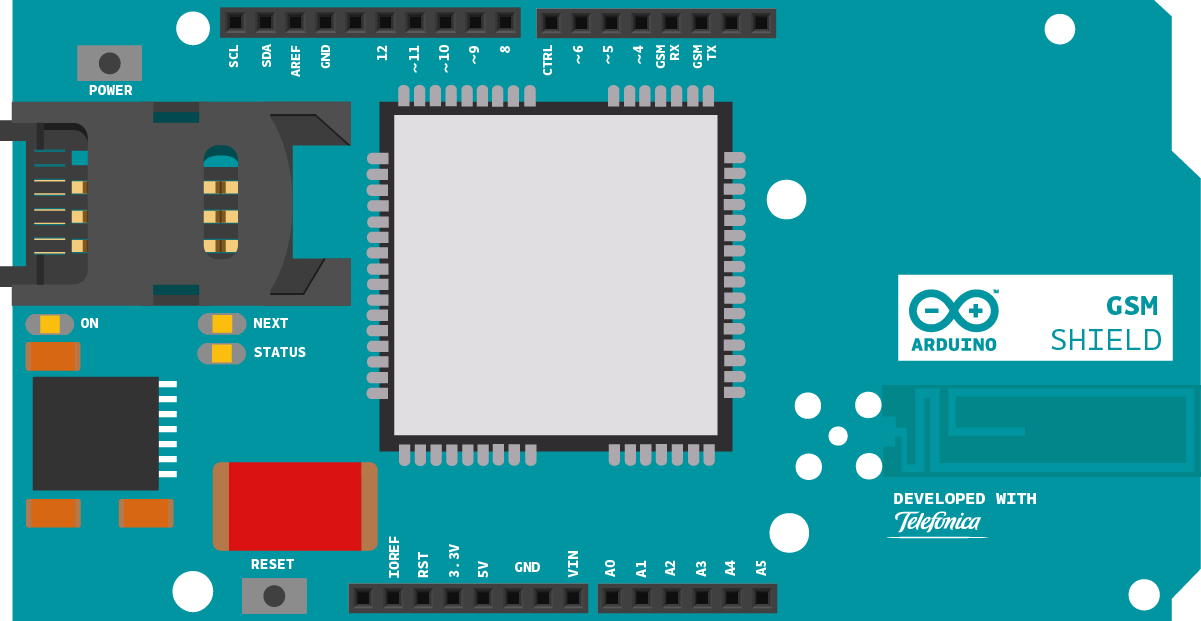This sketch receives a voice call from an Arduino or Genuino board equipped with a GSM shield. Once the call is received and connected, it shows the number that is calling, and hangs up. You’ll need to attach a speaker and microphone to hear the connected call and transmit your voice.
Hardware Required
- Arduino or Genuino Board
- Arduino + Telefonica GSM/GPRS Shield
- Microphone and speaker attached to the GSM shield
- SIM card
Circuit
Code
#include <GSM.h>
// PIN Number
#define PINNUMBER ""
// initialize the library instance
GSM gsmAccess; // include a 'true' parameter for debug enabled
GSMVoiceCall vcs;
char numtel[20]; // buffer for the incoming call
void setup()
{
// initialize serial communications
Serial.begin(9600);
Serial.println("Receive Voice Call");
// connection state
boolean notConnected = true;
// Start GSM shield
// If your SIM has PIN, pass it as a parameter of begin() in quotes
while(notConnected)
{
if(gsmAccess.begin(PINNUMBER)==GSM_READY)
notConnected = false;
else
{
Serial.println("Not connected");
delay(1000);
}
}
// This makes sure the modem notifies correctly incoming events
vcs.hangCall();
Serial.println("Waiting Call");
}
void loop()
{
// Check the status of the voice call
switch (vcs.getvoiceCallStatus())
{
case IDLE_CALL: // Nothing is happening
break;
case CALLING: // This should never happen, as we are not placing a call
Serial.println("CALLING");
break;
case RECEIVINGCALL: // Yes! Someone is calling us
Serial.println("RECEIVING CALL");
// Retrieve the calling number
vcs.retrieveCallingNumber(numtel, 20);
// Print the calling number
Serial.print("Number:");
Serial.println(numtel);
// Answer the call, establish the call
vcs.answerCall();
break;
case TALKING: // In this case the call would be established
Serial.println("TALKING. Enter line to interrupt.");
while(Serial.read()!='\n')
delay(100);
vcs.hangCall();
Serial.println("HANG. Waiting Call.");
break;
}
delay(1000);
}
![]()

